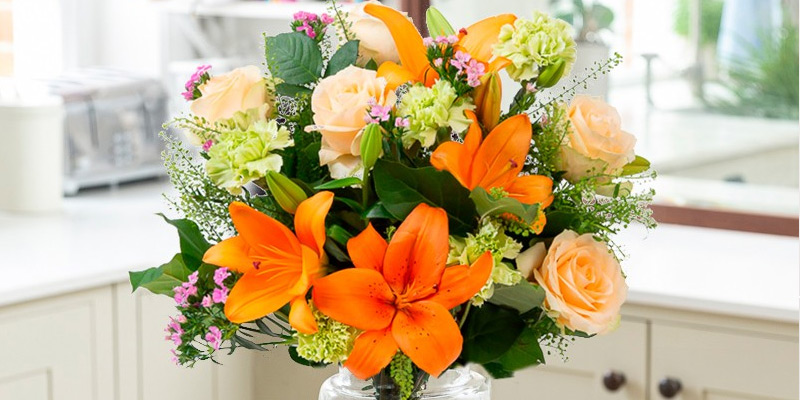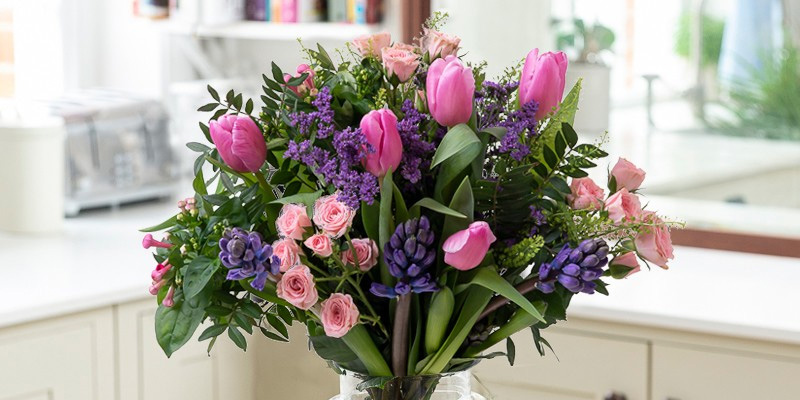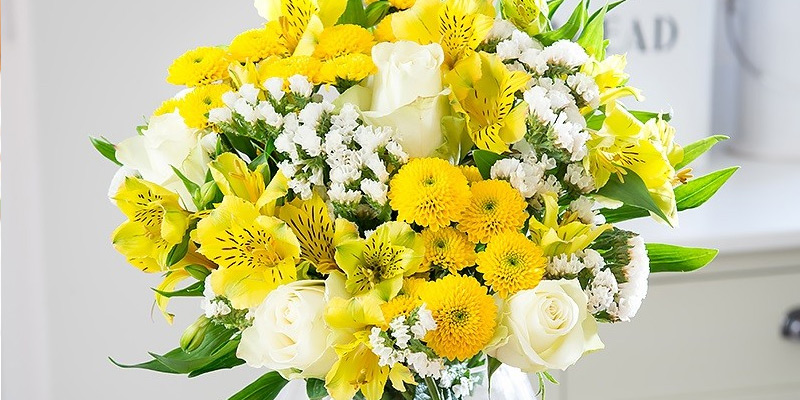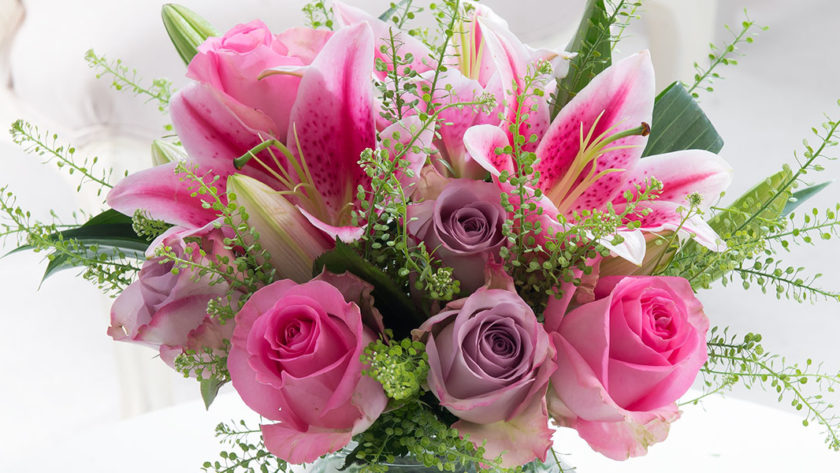If the words ‘spoil Mum’ aren’t already penned into your diary on Sunday 19th March, here’s your heads up.
That’s right, it’s Mother’s Day, when mums up and down the country will be hoping for some family time filled with love, laughter and maybe even some flowers.
Chances are, you know the drill when it comes to modern British Mother’s Day traditions —think a pretty card, a bouquet and maybe some chocolates or Prosecco — but did you know that many countries celebrate their mums in May, and often in different ways? In fact, only Ireland and Nigeria share the same Mother’s Day as us!
Let’s take a look at how mothers are made to feel special all around the world…
Britain
Mother’s Day here began in the 18th century when, on the fourth Sunday of Lent, those who had moved away from their home parish returned to worship the Virgin Mary in their ‘mother’ church (known as going ‘a-mothering’) and enjoy a lunch of roast lamb or veal with their families. Every mother would be declared Queen of the Feast on what was then known as Mothering Sunday.
In days of old, no Mother’s Day was complete without a generous serving of ‘mothering buns’. Known today as ‘iced buns’, these tasty treats hailed from Bristol and were usually decorated with a rainbow of sugary sprinkles. Surely it’s time they made a comeback?
On a similarly sweet note, children from bygone times would make simnel cake for their mums — a fruitcake layered with almond paste and topped with 11 marzipans balls to symbolise the 12 disciples, minus Judas the traitor. This highlight fell halfway through Lent, giving Mother’s Day the alternative name of Simnel Sunday. Yummy!
Flowers have always been popular. Children used to pick wild violets from the roadside on the way to church and place their posies on the altar, but today hand-tied bouquets can be sent to your mum’s doorstep or even through her letterbox, no foraging necessary.

USA
President Woodrow Wilson made Mother’s Day a national US holiday back in 1914, declaring that it would always fall on the second Sunday in May — a date that many other countries now also observe. But why? Well, there’s a devoted daughter to thank, and her name was Anna Jarvis.
Jarvis had begun campaigning for an official Mother’s Day after losing her own beloved mother, a Civil War era social activist named Ann Reeves Jarvis. Determined to encourage her country to celebrate “the person who has done more for you than anyone in the world”, she later derided how commercialised the annual occasion became. In fact, she hated the deluge of mass printed cards so much that she branded it a ‘Hallmark Holiday’ and tried to abolish it. She died aged 84 in 1948 and was buried by her mother’s side in Philadelphia.
Jarvis had famously given away 500 snowy white carnations at her mother’s memorial service because it had been her favourite flower. Consequently, the carnation became ‘the Mother’s Day flower’ state-side, with the white variety taken to graves and the pink variety representing gratitude.
Carnations are popular in British bouquets too, in part because of the American concept brought over by US soldiers during World War II, but also because of the Christian belief that they bloomed where the Virgin Mary’s tears fell during Christ’s crucifixion, symbolising her eternal maternal love. Find green ones in our Spring Meadow bunch, and pink blooms in Pomegranate Punch.
Canada
Canadians celebrate Mother’s Day much like their American neighbours, but in Quebec, French-Canadian men are expected to present their wives and mothers with red roses. The more the merrier, so it’ll be a bunch of 100 for us, please.

Italy
There are no prizes for guessing that Italian Mother’s Day celebrations centre around food! Families take ‘Mamma’ out for lunch to get her away from the stove, again on the second Sunday in May, before presenting her with dessert in the form of a heart-shaped cake. Simple and from the heart, handwritten poetry and fresh roses are among the most popular gifts.
France
La Fête des Mères, the French equivalent of Mother’s Day, falls on either the last Sunday of May or the first Sunday of June (the latter’s the case this year). Its history dates back to the Napoleonic era of the 1800s, when the fathers and later mothers of large families were celebrated in a bid to grow a declining population. Today, modern families say ‘merci, Maman’ over a slap-up Sunday lunch, complete with a fine bottle of French wine, bien sur.
Ethiopia
Mother’s Day in this Horn of Africa nation is a joyful three-day affair that takes place in mid-autumn, after the rains. Called ‘Antrosht’, a hearty main meal of ‘hash’ is served, containing chopped lamb, vegetables, cheese, spices and butter. Once everyone has had their fill, it is customary for mothers and daughters to anoint themselves with butter on their faces and chests, before everybody spends the night singing and dancing. Now that’s a party we’d like to join!
China
Carnations are the most sold flower on Mother’s Day in China, with the Chinese accepting the US-originating holiday because it echoes their ethos of respect and piety towards parents. It began in 1997 as a day to help poor mothers in rural areas but remains an unofficial celebration, held on the second Sunday of May.
More recently, the Communist Party member Li Hanqiu has been pushing for its official adoption as the ‘Chinese Mothers’ Festival’, with lilies replacing carnations in a nod to ancient Chinese mothers who planted them when their children left home.

Peru
Going one step further, party-loving Peruvians spend a full week celebrating their ‘madres’ in mid-May. Museums and art galleries let mothers in for free, and deceased mothers are remembered too, with their loved ones bringing balloons and flowers to their graves. Peru’s indigenous population also celebrates the ancient goddess known as ‘Pachamama’ (‘Mother Earth’) in early August, with a focus on her gift of fertility.
Mexico
Mexicans mark Mother’s Day on 10th May every year (it’s a Wednesday in 2023). The day starts with a special mass, followed by a big breakfast with the local community. Some families even hire a raucous mariachi band to wake their mother up with a song! Only in Mexico…
Serbia
Serbia’s celebrations are among the most memorable. Mother’s Day is part of a trio of December holidays that also include Father’s Day and Children’s Day. They take place on consecutive Sundays and require tying everybody up with rope!
On Mother’s Day, the mum is tied up until she gives foodie treats and little gifts to her children; on Children’s Day, the children are tied up until they promise to behave; and on Father’s Day, the dad is only freed once he gives his family their Christmas gift. Then, everybody tucks into a well-deserved, rope-free feast. Phew!
Egypt
Mother’s Day in Egypt is celebrated every year on 21st March, the first day of Spring. Mums are appropriately showered with spring flowers, cooked for or taken out for lunch. The main difference to other countries is that you are expected to extend the treats far and wide, including grandmas, mothers-in-law, aunties, distant aunties, mothers of friends and pretty much any other mother you know! It’s a true celebration of motherhood in all its forms.

Belgium
Belgian primary school children are busy bees in the run-up to Mother’s Day, making presents ready to give them that morning. Fathers have an important job too; they buy croissants and other sweet pastries to prepare an indulgent breakfast in bed for their partners. Pampering mum is the name of the game all day (the second Sunday in May again), and rightly so!
Australia
Sydney woman Janet Heyden brought Mother’s Day to Australia in the early 1920s, after being inspired to collect charitable gifts for elderly mothers in hospital who had lost their sons and husbands during the recent First World War. Though also held on the second Sunday in May, the weather is autumnal down under, meaning chrysanthemums replace carnations as the traditional Mother’s Day flower. Our Sunny Days bouquet seems perfect for any Aussie mums you may know.

Bangladesh
Despite becoming more popular in the country, many older Bangladeshi parents continue to reject the Western notion of Mother’s Day and Father’s Day, telling their children to “love your parents every day”. Fair dos, we say! That’s why our flowers are available all year round, so you can treat your mum on a random Tuesday, if you like.
Bangladeshi Hindus throw a 10-day festival in October called Durga Puja, celebrating the goddess Durga, the Divine Mother. It’s a toast to the triumph of good over evil, and features plentiful gift giving between friends and family, as well as the obligatory feasting.
Philippines
Celebrated once again on the second Sunday of May, Filipinos share many of our Mother’s Day traditions but do it all on a much bigger scale! The Phillipines is a heavily Catholic country, so the entire month of May is a festival centred around the Virgin Mary, called ‘Flores de Mayo’ (‘Flowers of Mary’). Children offer flowers to her at church every day, and at the end of May, a huge religio-historical procession brimming with beautiful blooms honours both Mary and Queen Helena, the mother of Constantine the Great.
Sweden
Mother’s Day flowers, a card and homemade breakfast in bed are the norm in Sweden, which always celebrates its mums on the last Sunday of May, when more fresh flowers are available. Flying the Swedish flag is another key tradition, as is baking a classic Swedish ‘princess cake’ — a cake or torte featuring alternating layers of airy sponge, pastry cream and raspberry jam, finished with a thick dome of whipped cream and a marzipan casing. Delicious!
If there’s one gift that’s sure to bring a smile to mums the world over, it’s a big bunch of beautiful flowers. Shop our Mother’s Day range today.





